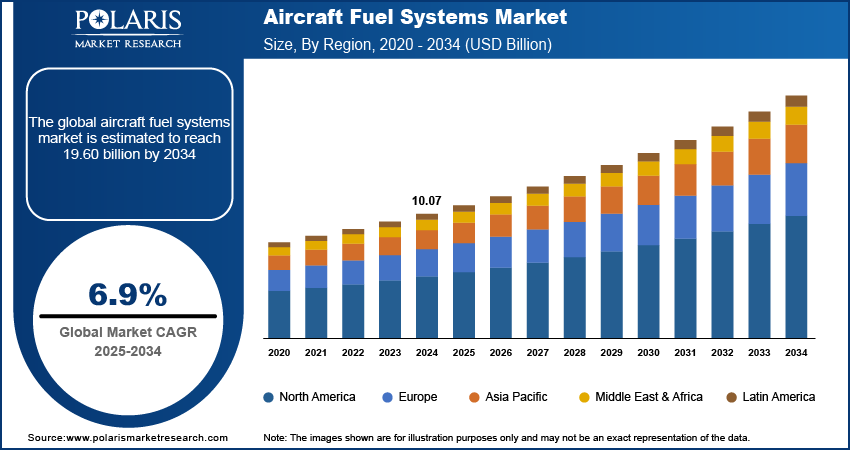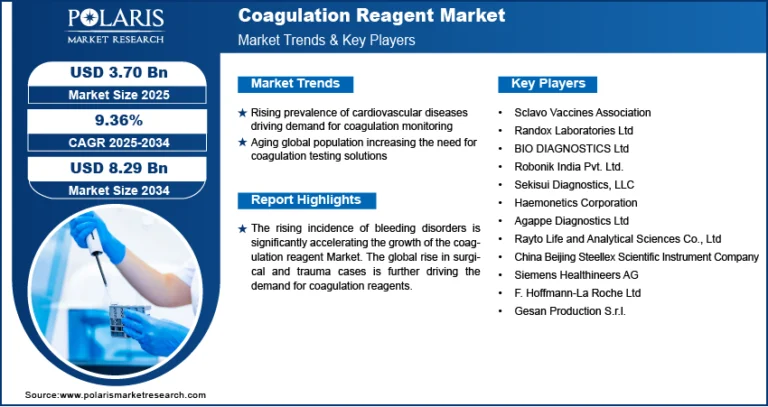Aerial Refueling System Market Expected to Surpass USD 997.72 Million by 2034 | CAGR: 4.6%

The global aerial refueling system market was valued at USD 637.29 million in 2024. It is projected to grow from USD 665.88 million in 2025 to reach USD 997.72 million by 2034, registering a compound annual growth rate (CAGR) of 4.6% during the forecast period from 2025 to 2034. This growth is driven by the global increase in defense spending and the ongoing modernization of air forces, which are boosting demand for aerial refueling systems and, consequently, driving market revenue.
Aerial Refueling System Market Key Trends & Insights:
- Shift Toward Modular & Multi-Platform Solutions: New systems are being designed for flexibility compatible with fighter jets, transport aircraft, drones, and helicopters through modular pods, refueling probes/drogues, and plug-and-play interfaces.
- Adoption of Autonomous and Robotic Refueling Systems: Advances in autonomous rendezvous, computer vision, and automated boom control are enabling unmanned aircraft and optionally piloted vehicles to perform aerial refueling with minimal human intervention.
- Innovations in Fuel Transfer Technologies: Development of high-flow-rate pumps, variable-flow valves, and smart metering systems is improving efficiency, reducing heat generation, and minimizing turbulence and spillage during fuel transfer operations.
- Growth Driven by Military Modernization and Coalition Operations: Defense budgets in North America, Europe, and Asia are increasing aerial refueling fleet capabilities to support global power projection, joint training, and expeditionary missions across both manned and unmanned platforms.
- Emergence of Hybrid and Sustainable Fuel Compatibility: Systems are being engineered to handle alternative fuels such as biofuels and synthetic fuels, as well as to safely accommodate dual-fuel operations (e.g., blending JP-8 with sustainable blends).
- Emphasis on Interoperability and Global Standards: International efforts are focusing on standardized refueling interfaces (probe-and-drogue vs. boom), cybersecurity protocols, and open-architecture designs to ensure coalition compatibility and logistics streamlining.
Market Size & Forecast:
- Market size value in 2025 – USD 665.88 million
- Revenue forecast in 2034 – USD 997.72 million
- CAGR – 4.6% from 2025 – 2034
𝐆𝐞𝐭 𝐄𝐱𝐜𝐥𝐮𝐬𝐢𝐯𝐞 𝐒𝐚𝐦𝐩𝐥𝐞 𝐏𝐚𝐠𝐞𝐬 𝐨𝐟 𝐓𝐡𝐢𝐬 𝐑𝐞𝐩𝐨𝐫𝐭:
Aerial Refueling System Market Overview:
The aerial refueling system market is experiencing steady growth, primarily driven by the increasing need for extended-range military missions and enhanced operational flexibility. As air forces worldwide upgrade their fleets, the demand for hose-and-drogue, flying boom, and hybrid refueling systems is rising. These systems support a broad range of aircraft including fighter jets, transport planes, UAVs, and helicopters. Advances in autonomous refueling technologies are improving precision and safety while reducing pilot workload. Innovations such as unmanned aerial tankers, smart refueling controls, and modular systems are transforming aerial refueling into a more efficient and integrated capability across defense operations.
North America currently dominates the market due to its substantial defense spending and advanced aerospace infrastructure. However, the Asia-Pacific region is rapidly gaining momentum, led by increased defense modernization efforts in countries like India, China, and Japan. Despite high acquisition and integration costs, the market presents strong growth potential through the development of UAV-compatible systems, multi-point refueling capabilities, and sustainable fuel technologies. Collaboration among defense contractors, system integrators, and military organizations is paving the way for next-generation aerial refueling solutions that offer improved autonomy, interoperability, and mission readiness.






